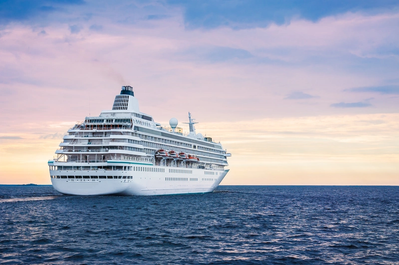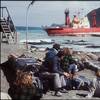Asian Cruise Market Growth Continues -Report
The Cruise Lines International Association, has released the findings from two new reports about the Asian Cruise market. The first, 2017 Asia Cruise Trends, is a comprehensive analysis of the cruise industry within Asia. The second, the 2016 North Asia Economic Impact Study, reveals the economic impact the cruise industry has had to the North Asian market.
“While the Asian cruise market has grown tremendously within the past four years – it has the potential to capture a much larger percentage of the Asian population, which could catapult Asia’s capacity share ahead of competing markets,” said Joel Katz, executive director, CLIA. “With these studies, CLIA aims to provide industry stakeholders with actionable, meaningful information to assist in structuring and supporting this emerging region.”
Highlights from the 2017 Asia Cruise Trends Includes:
- More Passengers: A total of 3.1 million Asians took cruises in 2016, 55 percent more than in 2015. Of these, 68 percent or 2.1 million were from mainland China, a market which almost doubled as it grew by 99 percent last year and at a four-year CAGR of 76 percent, confirming China as the world’s fastest growing major source of passengers.
- More Ships in Asian Waters - In 2017, 66 cruise ships are being deployed in Asian waters. Five of these are mega ships (more than 3,500 passenger capacity), 13 are large (2,000 to 3,500 passengers), 26 of the deployed ships will be mid-size, and 17 seasonal small upscale ships will be active in the Asian region. In addition, the Expedition niche will have 5 ships deployed in limited seasons. In 2013, there were only 43 ships cruising in Asia, marking a 53 percent growth since 2013.
- Increased Operating Days in 2017 – The Asian cruise industry has 10,196 operating days in Asia scheduled for 2017, an increase of 137 percent from 4,307 operating days in 2013, and an increase of 25 percent over the 8,171 operating days in 2016. The increased operating days in 2017 provide a total capacity for 4.24 million passengers. This passenger capacity has nearly tripled from 1.51M passengers in 2013.
- Asian Travelers Prefer Exploring Asian Destinations - Asian travelers predominantly take cruises within the region. Asian cruise only passengers grew at the fastest rate mostly due to the increase in the Chinese market. In fact, out of the 2,086 sailings scheduled for Asian waters in 2017 - 1,992 cruises (or 95.4 percent) will remain within Asia, with exclusive Asia-to-Asia itineraries, while an additional 94 voyages are scheduled to pass through the Asia region in 2017. Total sailings in and through Asia have seen strong growth over the past four years, increasing 142 percent, from 861 cruises and voyages in 2013 to 2,086 in 2017.
- Highlights from the 2016 North Asia Economic Impact Study:
- The direct economic contribution of cruise tourism across all of North Asia consisted of the $3.23 billion in direct expenditures, $1.51 billion in value added goods and services, and 23,697 full- and part-time jobs paying $754.5 million in employee compensation
- Wholesale & Retail Trade ($962.3M), Other Services & Government ($693.9M), and Financial & Business Services ($679.5M) were the primary direct beneficiaries of cruise tourism spending. Combined, these three sectors accounted for approximately 72 percent of the regional direct impacts with $2.34 billion in direct expenditures, $1.18 billion in value-added goods and services, and 19,252 full- and part-time jobs paying $594.4 million in employee compensation.
- The indirect and induced economic contribution is generated by the spending of the directly impacted businesses and their employee, which is then spread throughout the corporate and consumer sectors of each economy. These impacts totaled $3.98 billion in output, $1.72 billion in value-added goods and services, and 27,934 full- and part-time jobs paying $749.6 million in employee compensation.
- Manufacturing, Financial and Business Services, and Agriculture accounted for approximately 79 percent of the total indirect and induced impacts with $3.16 billion in output, $1.22 billion in value-added and 19,893 full- and part-time jobs paying $491.1 million in employee compensation.
- Combining the direct, indirect and induced contributions, the total economic contribution of cruise tourism in the three North Asia economies amounted to $7.21 billion in output, $3.23 billion in value-added goods and services and 51,631 full- and part-time jobs paying $1.5 billion in employee compensation.
- CLIA member cruise lines reported that they employed a total of 19,304 residents of North Asia as shoreside staff or crew. China, alone, accounts for 98 percent of this total with 18,974 employees. Including these cruise line employees and staff, the total employment impact increases to 70,935 jobs paying $1.8 billion in compensation across the three North Asia countries.














